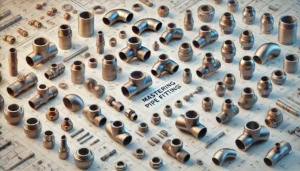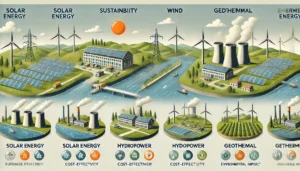In industrial piping networks, branches need fittings that can provide strength, reliability, and are easy to work with. Out of the several available options, weldolet and threadolet are two prominent self reinforcing branch fittings but are suitable for different applications. Although both of them are intended to be effective in making branch connections, they differ in a number of their structural characteristics as well as utilization. This guide explains these differences to assist you in the fitting selection process of your system.
What is a Weldolet?
This fitting is a patent branch fitting that is in a form of a ‘l’ shaped blade or for want of the better term a fork. A weldolet is self reinforcing, and as the name suggests welding takes place around the centre of the branch ends up creating what is referred to as a butt welded joint. Its unique shape and design does away with the requirement and use of extra reinforcement pads and therefore in its simplest form this fitting is well suited for both high pressure and high temperature environments or systems. They are highly robust, self-supporting branch fittings that are made for welded applications, and large diameter and critical systems are accompanied by this; petrochemicals industries, oil and gas, and power generation. This makes their use in extreme conditions (Pressure/Tₒ) with no restrictions in size or pressure class. This is versatile and is a dependable fitting for harsh needs.
What is a Threadolet?
Basically, a Threadolet can be defined as another self reinforcing branch fitting but this one has been designed for threaded type connections as opposed to the Threadolet which has been specifically designed for use with welded type connections. While pushing more challenging applications, Threadolets still perform well under small diameter piping systems and low-pressure applications. Securing a leak–tight joint is essential for any piping connections and while welding achieves this from a cutting issue, Threadolets do not need welding making them fit for places where welding cannot be done or is not preferred. Moreover, Threadolets are basic fittings used for larger task such as instrumentation connections, utility lines, and smaller pipelines. These designs hold a simple execution allowing for a quick and easy fit that allows one to easily take it down when not needed. Such fittings are of practical use for temporally or in easily accessible piping systems.
Differences Between Weldolet and Threadolet
Connection type, pressure handling capability, size range and even their intended usage are factors that set Weldolet and Threadolet apart. Now, it is a fact that weldolets are complicated; they are made for butt-welded connections, this is why they can only be used under tough circumstances and greater temperatures. There are no limits or restrictions as well to the sizes of these Weld-O-Lets, so they can be utilized in highly critical systems be it oil and gas or power generation. On the other hand, Threadolets don’t have a restricted size but they only cater to low pressure, thus they can be used in oil, gas and other systems that could make use of threading. This is why Threadolets are typically used in small-diameter piping systems and utility lines. These types of Threadolets are easy to install especially in application where maintenance is not required too often.
When Should You Use Matching Threadolet With A Weldolet
Whether to weld or thread is most suited to the job at hand. A weldolet is a suitable option for systems that are expected to suffer from high-pressure or high temperatures. They’re also ideal in the case that the branch tee has bigger pipes and a permanent butt weld is required to give the branch’s greater strength and reliability. However, in the case the pipelines work in a low-pressure cold weather region, slot fittings are useful. They’re great for hot watered small pipes or working places which call for moderately fast fittings without trouble dismantling when necessary.
Conclusion
Weldolets and threadolets are both essential for industrial piping systems however they serve different purposes and work advantageously in different areas. Weldolets are fit for critical large scale applications that require high pressure and are designed to sustain high temperatures. Threadolets on the other hand are ideal for low pressure systems because of their threaded fittings that are simple to work with and fast to put in. Both these fittings are important for a good plumbing system and contribute majorly towards it’s efficiency.
At Induskart, we offer a complete assortment of Wohldolets Threadolets and any other branched pipe fittings that cater to industrial piping requirements. For ease of installation, for strength or for versatility, we have a solution that fits the needs of every project.










